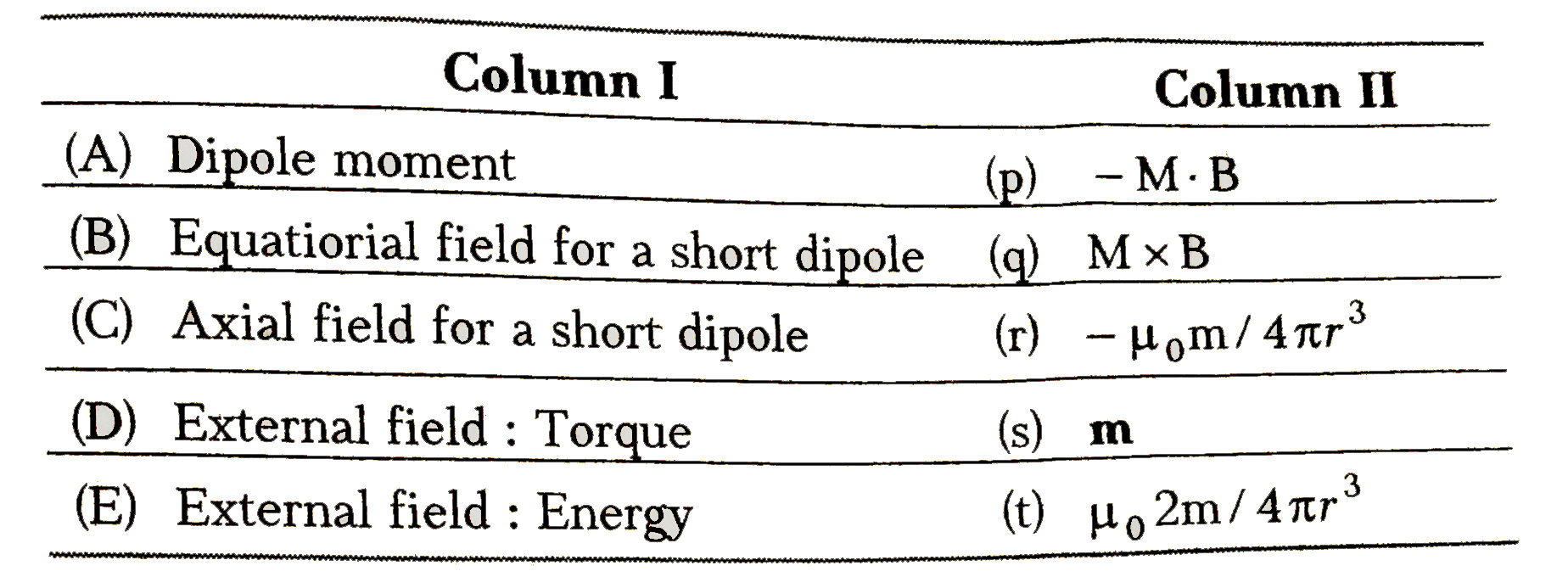Deduce an expression for the magnetic dipole moment of an electron orbiting around the central nucleus.
To deduce an expression for the magnetic dipole moment of an electron orbiting around a central nucleus, we can follow these steps:
Step 1: Understand the Concept of Magnetic Dipole Moment
The magnetic dipole moment (μ) of a current loop is given by the formula:
μ=n⋅I⋅A
where n is the number of turns, I is the current, and A is the area of the loop.
Step 2: Define the Parameters
Consider an electron of charge e (approximately 1.6×10−19C) orbiting around a nucleus in a circular path of radius r with a velocity v.
Step 3: Calculate the Time Period
The time period T for one complete revolution of the electron is given by:
T=2πrv
Step 4: Calculate the Current
The current I due to the electron's motion can be defined as the charge passing through a point per unit time. Since the electron completes one full revolution in time T, we can express the current as:
I=eT=e2πrv=ev2πr
Step 5: Calculate the Area of the Loop
The area A of the circular path of the electron is:
A=πr2
Step 6: Substitute Values into the Magnetic Dipole Moment Formula
Now, substituting the values of n, I, and A into the magnetic dipole moment formula:
μ=n⋅I⋅A=1⋅(ev2πr)⋅(πr2)
Step 7: Simplify the Expression
Simplifying the expression gives:
μ=ev2πr⋅πr2=evr2
Final Expression
Thus, the magnetic dipole moment of an electron orbiting around a central nucleus is:
μ=evr2
---
The magnetic dipole moment (μ) of a current loop is given by the formula:
μ=n⋅I⋅A
where n is the number of turns, I is the current, and A is the area of the loop.
Consider an electron of charge e (approximately 1.6×10−19C) orbiting around a nucleus in a circular path of radius r with a velocity v.
The time period T for one complete revolution of the electron is given by:
T=2πrv
The current I due to the electron's motion can be defined as the charge passing through a point per unit time. Since the electron completes one full revolution in time T, we can express the current as:
I=eT=e2πrv=ev2πr
The area A of the circular path of the electron is:
A=πr2
Now, substituting the values of n, I, and A into the magnetic dipole moment formula:
μ=n⋅I⋅A=1⋅(ev2πr)⋅(πr2)
Simplifying the expression gives:
μ=ev2πr⋅πr2=evr2
Thus, the magnetic dipole moment of an electron orbiting around a central nucleus is:
μ=evr2
Topper's Solved these Questions
- ELECTRODYNAMICSBOOK - RESONANCE ENGLISHCHAPTER - ELECTRODYNAMICSEXERCISE - Advanced level problems
31 Videos
- ELECTRODYNAMICSBOOK - RESONANCE ENGLISHCHAPTER - ELECTRODYNAMICSEXERCISE - Exercise-3 PART-2
27 Videos
- ELECTRO MAGNETIC WAVESBOOK - RESONANCE ENGLISHCHAPTER - ELECTRO MAGNETIC WAVESEXERCISE - Exercise 3
27 Videos
- ELECTROMAGNETIC INDUCTIONBOOK - RESONANCE ENGLISHCHAPTER - ELECTROMAGNETIC INDUCTIONEXERCISE - A.l.P
19 Videos
Similar Questions
Derive an expression for the magnetic moment (→μ) of an electron revolving around the nucleus in termsof its angular momentum (→l). What is the direction of the magnetic moment of the electron with respect to its angular momentum?
View SolutionWith reference to magnetic dipole, match the tems of Column I with the tems of Column Ii and Choose the correct option from the codes given below.

View SolutionThe minimum magnetic dipole moment of electron in hydrogen atom is
View SolutionMagnetic dipole moment of rectangular loop is
View SolutionFind an expression for the magnetic dipole moment and magnetic field induction at the center of Bohr's hypothetical hydrogen atom in the nth orbit of the electron in terms of universal constant.
View SolutionDeduce the expression for the magnetic dipole moment of an electron orbiting around the central nucleus.
View SolutionThe electric dipole moment of an electron and a proton 4.3 nm apart, is
View SolutionWhat should be the maximum velocity of an electron orbiting around a hydrogen nucleus
View SolutionWhat should be the maximum velocity of an electron orbiting around a hydrogen nucleus
View SolutionMagnetic moment of an electron in nth orbit of hydrogen atom is
View Solution
